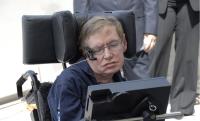 Add My Company
Add My Company
Sign In
ALS: The How, What, When and Why
15-03-2023

Amyotrophic lateral sclerosis, commonly known as ALS, is a progressive neurodegenerative disease affecting nerve cells in the brain and the spinal cord.
The name is derived from the Greek language. The word “amyotrophic” literally means “no muscle nourishment”, causing it to waste away, while “lateral” refers to the areas of the spinal cord where nerve cells controlling the muscles are found.
The condition causes these areas to degenerate, leading to scarring and “sclerosis” or hardening in the region. As the motor neurons die, the brain’s ability to control muscle movement is lost.
Voluntary muscle action is affected progressively, so over time, people with ALS may lose the ability to move, speak, eat and breathe unaided in the later stages.
When was the disease first discovered?
Amyotrophic lateral sclerosis was first recognised in 1869 by Jean-Martin Charcot, the French neurologist who was known as the “father of neurology”.
His pioneering studies of patients, combined with anatomic analysis, led to the first clear definition of the neurological disease and a classic description of its symptoms.
However, it didn’t become widely known internationally until 1939, when one of the world’s most famous baseball players, Lou Gehrig, was diagnosed with ALS. The condition subsequently ended his career.
The world-famous English theoretical physicist and author, Dr Stephen Hawking, was diagnosed with ALS at the age of 21. While many people with the condition have a short life expectancy, he lived for more than 50 years with ALS, using technology to enhance his quality of life.
He died aged 76 in March 2018. At the time of his death, he was the Centre for Theoretical Cosmology’s director of research at the University of Cambridge. He had forged a distinguished academic career and never let his condition hold him back.
What are the symptoms of ALS?
The muscles become either weak and soft, or stiff and tight. The most common symptoms are cramps and muscle twitches. These may occur in a single body region or they can affect more than one area.
The disease can affect the muscles used for speaking and swallowing first, but become more widespread as time passes. Some muscles can become paralysed, especially in later stages. Hearing, vision and touch are not affected.
ALS does not always impact the person’s ability to think. However, up to 50% of patients with ALS have cognitive or behavioural challenges. The life expectancy of a person with ALS is generally shortened, although all individual cases are different.
How is ALS diagnosed?
The late 50s is the average age for a diagnosis of ALS, although it can be diagnosed later in life than this. It can occasionally occur in young adults, or in very elderly people.
Men below the age of 65 are more likely to develop ALS than women. Worldwide, one to three new cases of ALS per 100,000 people are diagnosed annually. The medical profession says this figure is approximately the same in countries all over the world.
Diagnosis of ALS is very difficult and there is no one test to establish whether the condition is present. The diagnosis begins with a clinical examination and a number of diagnostic tests to rule out other diseases that can appear to be ALS.
A series of comprehensive diagnostic procedures include electrodiagnostic tests, such as nerve conduction velocity and electromyography. Urine and blood samples are studied, as are thyroid and parathyroid hormone levels.
What are the treatment options?
Once a diagnosis of ALS has been confirmed, there are many decisions to make such as managing the symptoms, evaluating the treatment options and adjusting most aspects of the patient’s daily routine.
There is no known cure for ALS, although research is ongoing to try and find one. The medication, riluzole, has been approved for treatment, as early signs suggested it can slow down progression of the disease.
Current treatments are designed to help control the symptoms using drugs such as diazepam, baclofen and the painkiller Gabapentin. Physical therapy, speech therapy, rehabilitation, the use of a wheelchair or braces and other treatments are available to help the muscles work and improve the patient’s general health.
As well as the medical profession, the ALS Association is there to help people when they have been diagnosed.
Who is more likely to get ALS?
The condition is 20% more common in men than in women, but the incidences level out and become more equal with increasing age. Nine in ten cases of ALS occur in patients who have no known family history or genetic problems.
The other 10% of cases occur through an inherited mutated gene. Military veterans are more likely to have ALS than non-military members of the public. The reason for this is currently unknown. Research is ongoing to help the medical profession understand how and why the disease occurs.
Is quality sleep a challenge?
People with ALS may also face challenges when it comes to having quality sleep. Physical symptoms such as muscle cramp, reduced mobility, pain, spasticity, restless legs syndrome and mucus retention can all lead to problems with falling asleep and staying asleep.
This is why Kinderkey’s specialist beds for people with ALS can help with sleep disturbances by providing safe sleeping solutions to aid comfort and security.
Are researchers close to finding a cure?
The latest medical research is studying how stem cell therapy can treat the condition. A new and innovative treatment approach, it has the potential to slow down the decline of motor neurons and improve the patients’ quality of life.
Mesenchymal stem cell therapy has shown excellent therapeutic potential in various clinical fields. Trials of this treatment approach for ALS involves using stem cells, which are undifferentiated cells that are developed into various specialised cells. They can then be used to repair or replace damaged or lost cells in the brain due to ALS.
New stem cells enter the body through intravenous injections and can find areas of damage and inflammation via homing mechanisms. Scientists have described the early evidence as a “treatment breakthrough”.
The Journal of Neuroimmunology published a review that analysed the results of 13 clinical trials using mesenchymal stem cells to treat ALS. It found that mesenchymal stem cells were “well-tolerated” and had a “favourable safety profile”. No serious adverse side effects were reported in the studies.
However, more research is required to understand the potential benefits and risks of this type of treatment. People with ALS must continue to work with their medical professionals to determine the best treatment plan.
For more information on ALS: The How, What, When and Why talk to Kinderkey Healthcare Ltd
Enquire Now
List your company on FindTheNeedle.

